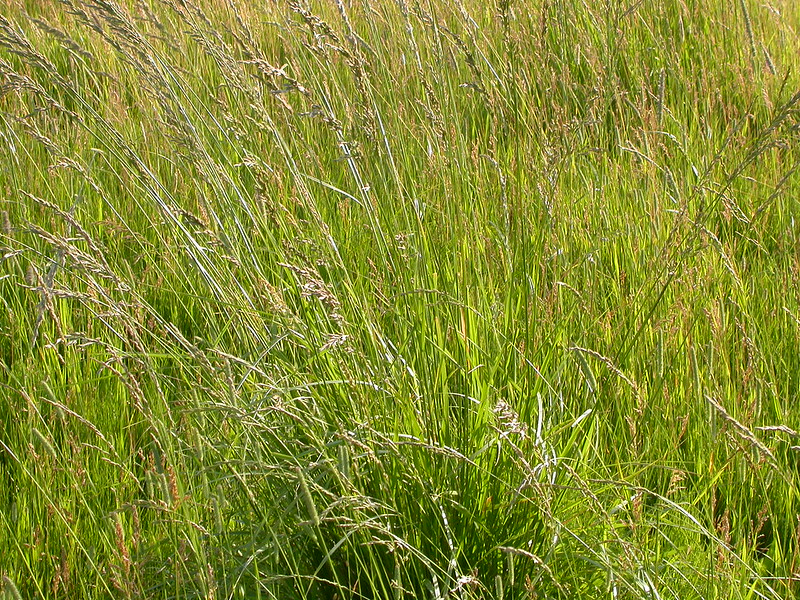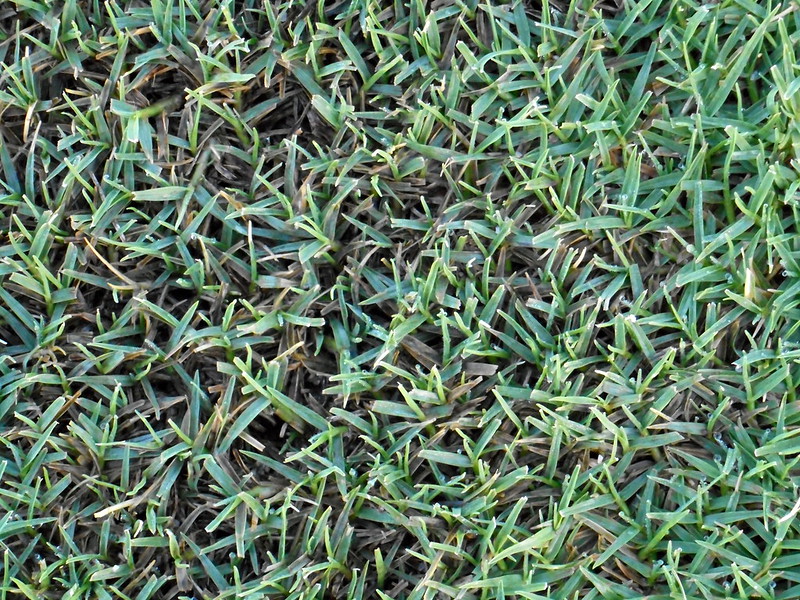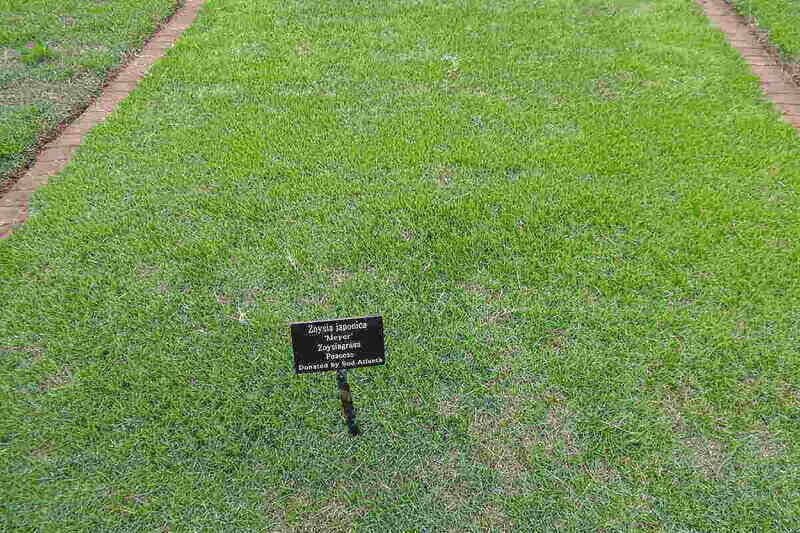Best Grasses for Your Missouri Lawn
BY FARAH NAUMAN | MAY 25TH, 2023 | LAWN CARE, MISSOURIIn the Midwestern transition zone, your Missouri lawn endures both sweltering summers and freezing winters. This makes a perfect recipe for a dull, grim lawn if your yard doesn’t have the right grass seeds to pull through the temperamental climate.
In this article, we look at warm- and cool-season grass varieties that work well in Missouri, along with their pros and cons to help you pick the best grass for your Missouri lawn.
In this article:
- 3 Cool-season Grasses for Missouri
- 2 Warm-season Grasses for Missouri
- FAQ about North Georgia Grass Types
3 Cool-season Grasses for Your Missouri Lawn
Before we get to the list, here’s a quick rundown of what cool-season grasses are like:
- Cool-season grasses are planted in late summer or early fall.
- They are hardy, long-lasting, and highly cold-tolerant.
- Will grow best in temperatures between 60 and 75 degrees.
- Cool-season grasses go dormant in the summer
- Ideal mowing height is kept higher than warm-season grasses
- They can grow well in the shade.
- If you’re mixing it with another grass to enhance the strength or appearance of your lawn, only mix with fine or medium-textured warm-season grasses to keep the appearance even.
Let’s dig into these three best cool-season grasses for your Missouri lawn:
1. Tall Fescue

Photo Credit: Matt Lavin / Flickr / CC BY-SA 2.0
Turf-type tall fescue is excellent for a Missouri landscape. It’s developed by seed or sod and grows coarse-to-medium-textured, tall turfgrass. This grass tolerates high temperatures, heat, drought, and shade. Given proper care, tall fescue lawns can even stay green all around the year. Plus, it’s a pretty low-maintenance grass.
Tall Fescue may struggle a little in hotter parts of Missouri during the summer months but survives better in the heat than all other cool-season grasses. It can grow in poor soil conditions and with little fertilization, too. Generally, tall fescue is also highly resistant to pests and diseases and grows best during the fall and spring months.
Spreads by: Bunch-type
Drought tolerance: Moderate to high – may need irrigation during dry summers
Shade tolerance: Moderate
Foot traffic tolerance: Moderate to high
Maintenance needs: Very low
Potential for disease: Low
Recommended mowing height: 2 – 4 inches
Soil pH: 5.8 – 6.5
Pros:
- Is not prone to disease and insects
- Excellent traffic tolerance
- Can stay green during winter
- Grows in nutrient-poor soil
Cons:
- Slow growing
- Needs direct sunlight for better turf
2. Perennial Ryegrass

Photo Credit: Matt Lavin / Flickr / CC BY-SA 2.0
This dark green, fine-bladed grass type will give your Missouri lawn a temporary pop of color for the winter. Perennial ryegrass is fast germinating and suppresses weeds naturally by establishing quickly.
Of all cool-season grasses, ryegrass has the highest wear tolerance, which is why it is popular for parks and golf courses. However, it is less tolerant of heat and drought compared to other species.
Perennial ryegrass develops tapered, fine-textured, shiny blades that require regular maintenance to keep a uniform look. It is considered a nurse grass, meaning it’s often mixed with other grasses to provide shade and protection to less hardy grass types, such as Kentucky bluegrass.
Spreads by: Bunch-type, extends with tillers
Drought tolerance: Low to moderate
Shade tolerance: Low
Foot traffic tolerance: High
Maintenance needs: Moderate
Potential for disease: High, look out for red thread, brown patch, and rust
Recommended mowing height: 1.5 to 3 inches
Soil pH: 6.0 – 7.0
Pros:
- Doesn’t readily accumulate thatch
- Germinates quickly
- Soft and comfortable to walk on
- Develops a lovely medium green color through winter
Cons:
- Prone to diseases
- Low shade tolerance
- Slow to recover after injury
3. Kentucky Bluegrass

Photo Credit: Matt Lavin / Flickr / CC BY-SA 2.0
Kentucky bluegrass establishes a dense turf and is a popular choice for northern areas due to its winter hardiness. It has a bluish-green color and has a medium texture – not too hard, not too soft – to make a great “barefoot grass”.
But Kentucky bluegrass is high-maintenance. It needs more water and fertilizer than any other cool-season grass type. It prefers areas with partial shade and spreads quickly by rhizomes. It is often mixed with other grass species, typically perennial ryegrass, to create a disease-resistant, tough turf that maintains a nice green appearance year-round.
Spreads by: Rhizomes
Drought tolerance: Moderate
Shade tolerance: Low, prefers sunlight
Foot traffic tolerance: Moderate
Maintenance needs: Moderate to high
Potential for disease: Moderate
Recommended mowing height: 2.5 to 3 inches
Soil pH: 6.0 – 7.0
Pros:
- Quick to recover from daily wear and damage
- Creates a resilient, tough lawn
- Comfortable to walk barefoot on
Cons:
- Goes semi-dormant in early summer
- Vulnerable to thatch
- Needs more water and fertilization
2 Warm-Season Grasses for Your Missouri Lawn
A quick overview of warm-season grasses:
- They create strong lawns and grow best between late spring and summer.
- Their ideal growing temperature is between 80 to 90 degrees.
- Warm-season grasses have thick, rough, strong blades, as opposed to cool-season grasses.
- Their ideal mowing height is lower than cool-season grasses.
- Warm-season grasses go dormant in the winter.
Here are two warm-season grasses that do well in Missouri lawns:
1. Bermudagrass

Photo Credit: Scot Nelson / Flickr / CC0 1.0
Bermudagrass is the most widely used grass in Southern Missouri. It’s well suited for your Missouri lawn because it is hardy, low-maintenance, and develops dense turf. Bermudagrass spreads vigorously with stolons and rhizomes and has excellent resistance to foot traffic and wear due to these woven roots.
The dense Bermudagrass turf also naturally crowds out weeds. This grass type is fast-growing and resistant to salinity, heat, and a wide range of soil pHs. However, the rapid growth rate can become a nuisance if the grass invades gardens or flower beds.
Bermudagrass needs full, bright sun to thrive and regular dethatching to stay disease free. It goes brown and dormant in the winter and greens back up around early April.
Spreads by: Rhizomes and stolons
Drought tolerance: High
Shade tolerance: Low
Foot traffic tolerance: High
Maintenance needs: High
Potential for disease: Moderate
Recommended mowing height: 1 to 1.5 inches
Soil pH: 5.8 – 7.0
Pros:
- Most adapted grass type for transition zones
- Deep roots that store water to survive drought-like conditions
- Available in several varieties
- Easy to establish with plugs, seeds, sprigs, and sod
Cons:
- Low cold tolerance, but some new varieties come with better cold forbearance
- High maintenance
- Susceptible to thatch
2. Zoysiagrass

Photo Credit: Michael Rivera / Wikimedia Commons / CC BY-SA 4.0
This is a cold-tolerant and thick warm-season grass that will keep your Missouri lawn green for the most part of the year. It’s a popular choice for homeowners with kids and pets because of its hardiness and impeccable foot traffic tolerance.
Zoysiagrass thrives in direct sunlight and develops a dark green color turf. This lush green color slowly fades as the temperature drops but won’t turn brown or tan. Since it develops into a dense lawn by stolons and rhizomes, Zoysia lawns are often vulnerable to thatch.
Zoysiagrass needs frequent watering during the summer but is super easy to maintain otherwise. It tackles a good amount of foot traffic too.
Spreads by: Rhizomes and stolons
Drought tolerance: High
Shade tolerance: Moderate
Foot traffic tolerance: High
Maintenance needs: Low
Potential for disease: Low
Recommended mowing height: 1 to 2.5 inches
Soil pH: 5.8 – 7.0
Pros:
- Has a soft, “walkable” texture
- It is salt tolerant
- Comes in wide- and fine-bladed varieties
- Works well with sand, clay, and loam
- Generally drought tolerant; does fine but might go dormant
Cons:
- Slow-growing
- May develop thatch due to nitrogen sensitivity
- Costly to establish the first time
Frequently Asked Questions About Grasses for Missouri
The most commonly used grass in Missouri is turf-type tall fescue. It is drought, heat, disease, and insect resistant and does fine with moderately shaded environments too.
The optimal time to plant grass in Missouri is late August to mid-October, September being ideal. At this time, the soil is still warm but the chilly breezes help grass seeds germinate faster.
Tall fescue can maintain a deep green color all year if you care for it properly. It’s well-known for its ability to thrive in transition zones with minimal maintenance.
Need Help Setting Up Your Missouri Lawn?
If you’re confused about what grass type suits your lawn, when and how to plant it, or you don’t have the time to set a lawn up by yourself, call in one of our lawn care pros to help. Our pros come equipped with all the knowledge, equipment, and expertise that you need to choose the right grass type for your Missouri lawn.
Main Photo By: Hippopx